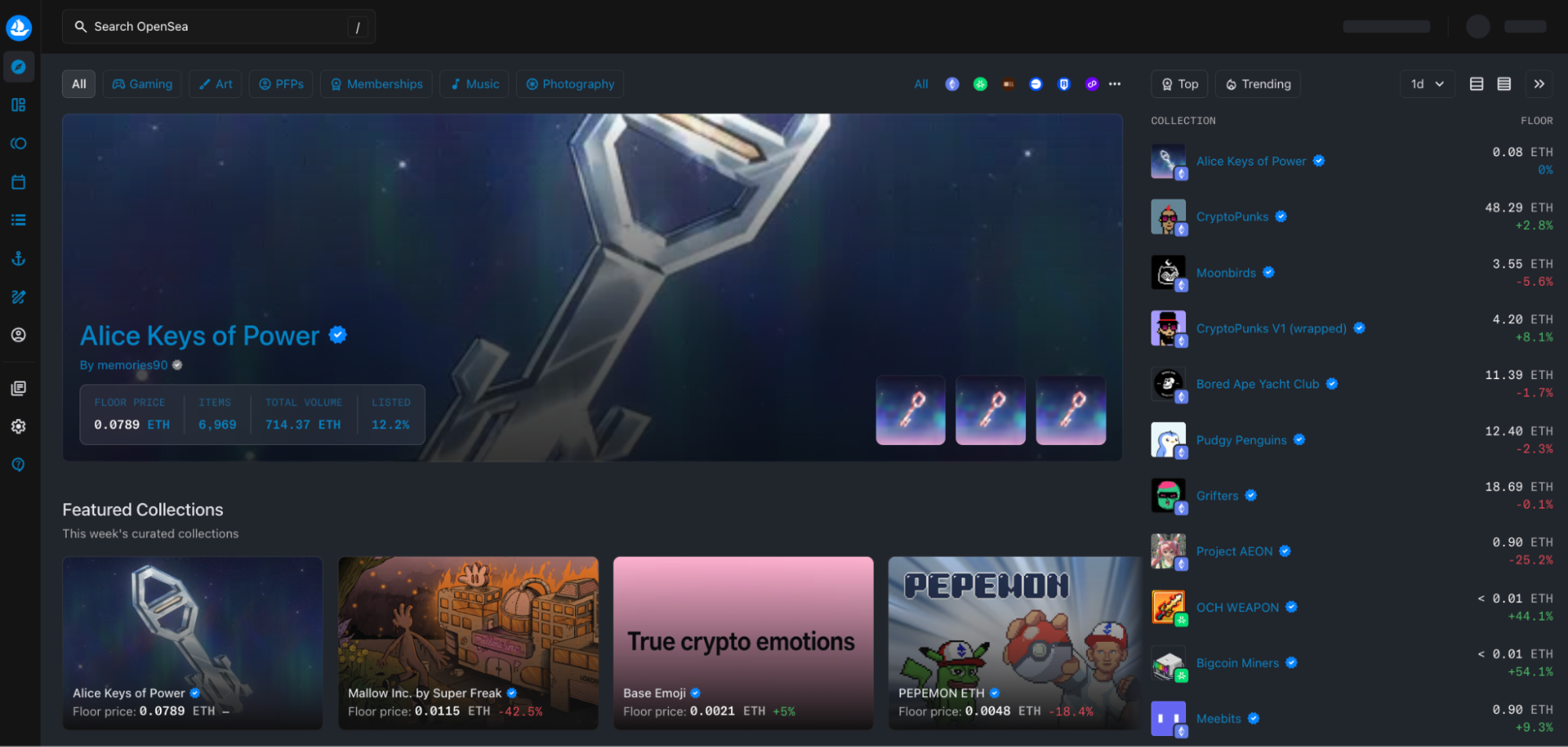NFT Art: The New Trend of Digital Collectibles and Investment Opportunities
Definition and Origins of NFT Art

Image: https://opensea.io/
NFT (Non-Fungible Token) art represents an innovative approach to digital artwork ownership, leveraging blockchain technology to record and verify ownership history. Unlike traditional works of art, every NFT is one-of-a-kind and cannot be duplicated or substituted. NFT art first appeared in 2017 with the CryptoPunks project. However, the market truly accelerated after 2020 as digital art converged with cryptocurrency. Today, NFT art spans digital illustrations, music, video, virtual goods, and other digital media.
How NFT Art Is Transforming the Art Market
NFT art breaks down traditional art market boundaries and increases transaction transparency and accessibility. Blockchain records allow artists to connect directly with buyers worldwide, bypassing galleries and auction houses. Furthermore, smart contracts enable artists to earn royalties on every resale of their works, ensuring continuous revenue. This model not only boosts artist incomes but also fuels engagement from a growing community of digital collectors.
Advantages and Risks of Investing in NFT Art
Investment in NFT art continues to draw the attention of investors worldwide. Key advantages include the scarcity of digital artworks, ease of global trading, and high market liquidity. With the development of NFT communities and ecosystems, select pieces may experience rapid appreciation. However, NFT art investments involve significant risks, such as high market volatility, limited liquidity, copyright disputes, and platform security vulnerabilities. Consequently, newcomers should carefully vet platforms and artworks and prioritize robust risk management strategies.
Future Trends in NFT Art
Looking ahead, NFT art will further integrate with virtual reality (VR), augmented reality (AR), and metaverse innovations to deliver richer digital art experiences. At the same time, established art institutions and major brands are entering the NFT art space, driving its mainstream adoption and regulatory maturity. For collectors and investors, NFT art unlocks not only a novel collecting experience but also a promising investment avenue.
NFT art is reshaping how we perceive and interact with art. Gaining a solid understanding of NFT technology, market dynamics, and investment strategies will empower new entrants to capture opportunities in digital art. This can maximize both collectible and investment value.
Related Articles

Pi Coin Transaction Guide: How to Transfer to Gate.io

Flare Crypto Explained: What Is Flare Network and Why It Matters in 2025

How to Use a Crypto Whale Tracker: Top Tool Recommendation for 2025 to Follow Whale Moves

2025 BTC Price Prediction: BTC Trend Forecast Based on Technical and Macroeconomic Data

What is N2: An AI-Driven Layer 2 Solution
